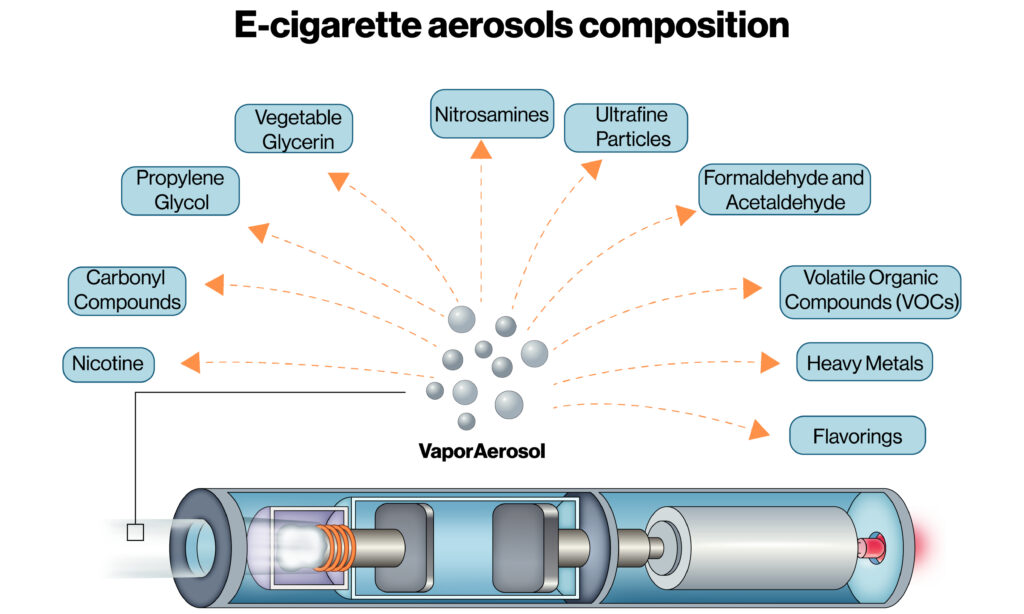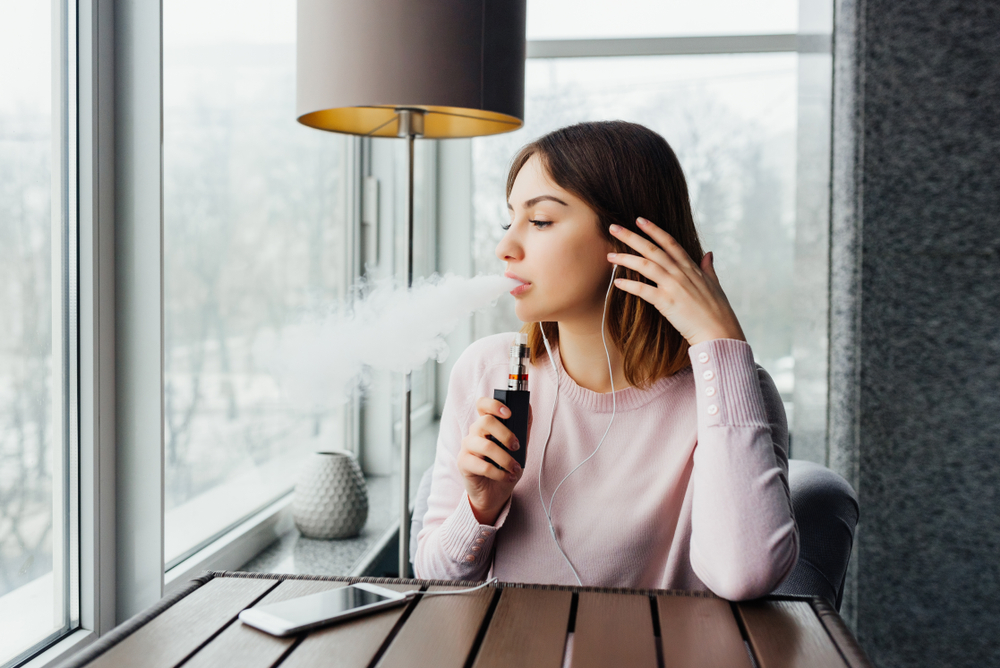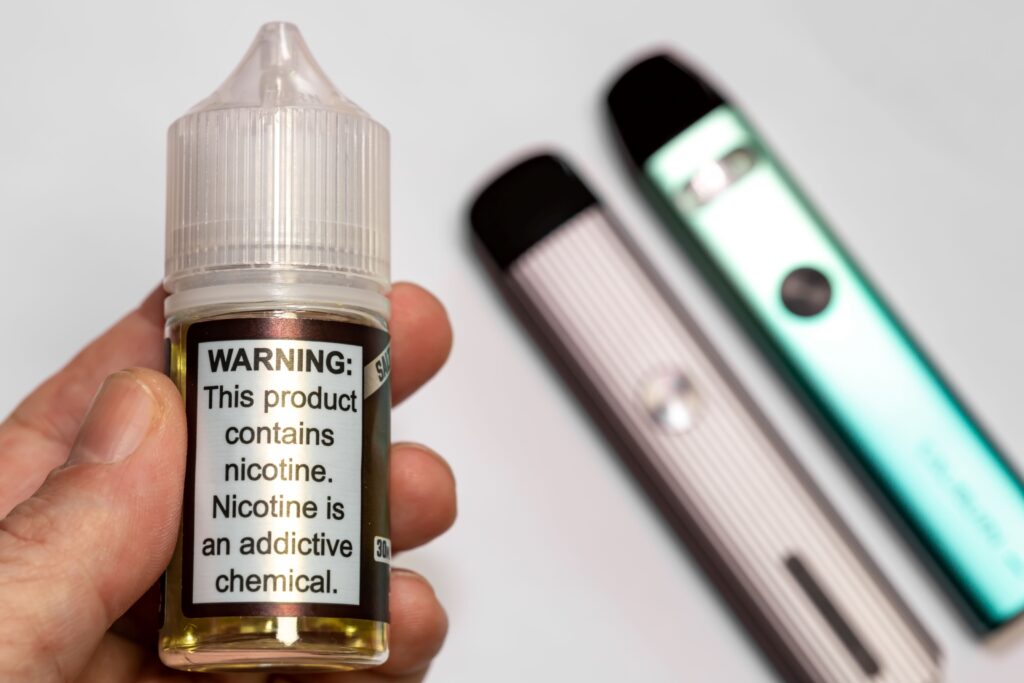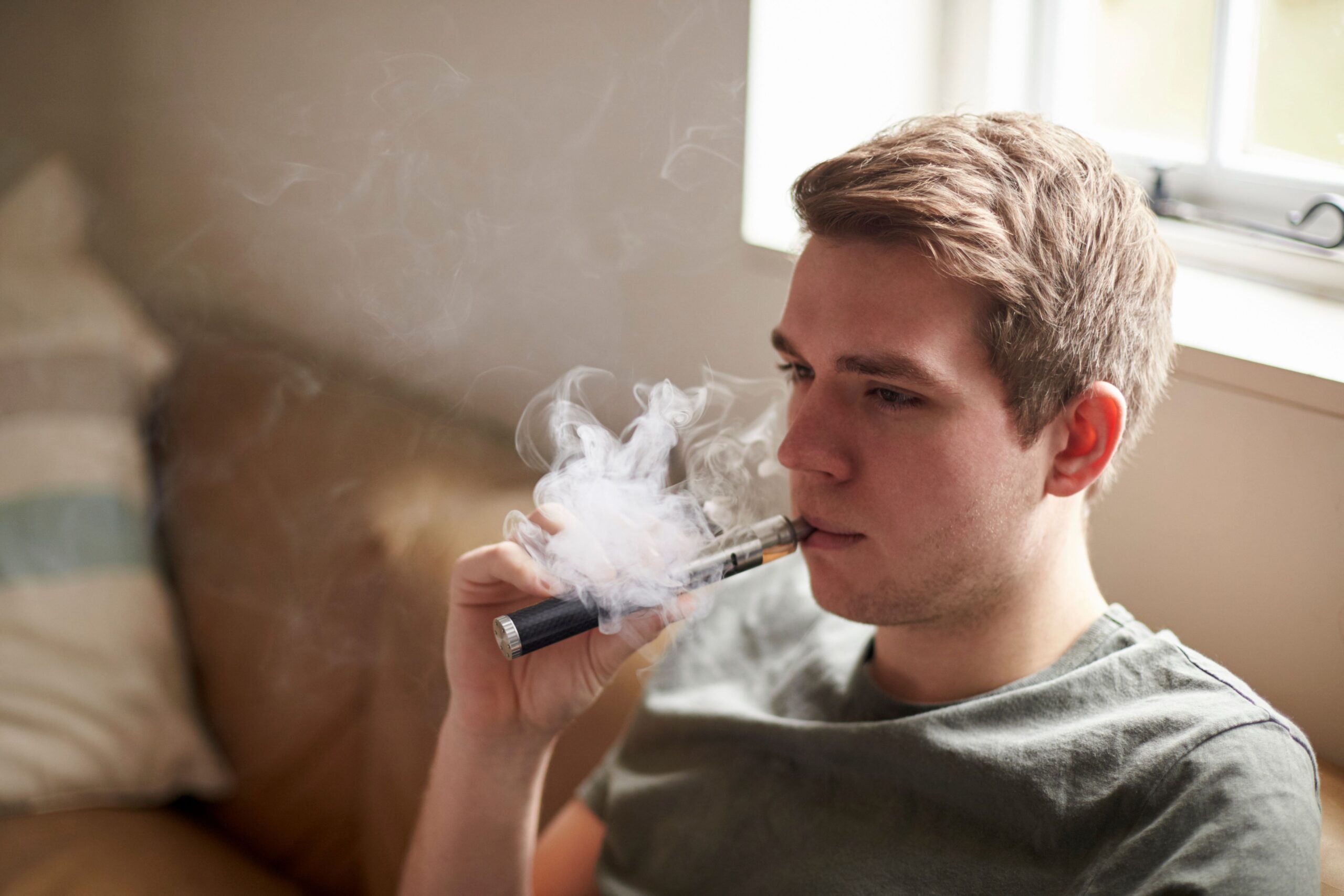While vaping may seem harmless compared to smoking, it still poses a variety of health risks to both vapers and non-vapers who share the same indoor environment.
Respiratory Issues
- Inhaling the aerosolized chemicals from e-cigarettes can irritate the respiratory tract, causing coughing, wheezing, and shortness of breath. Long-term exposure may lead to chronic respiratory conditions like asthma or bronchitis.
Cardiovascular Risks
- The nicotine in e-cigarettes raises heart rate and blood pressure, contributing to an increased risk of heart disease.
Exposure to Carcinogens
- Chemicals like formaldehyde and acrolein have been classified as carcinogens by the International Agency for Research on Cancer (IARC). Chronic exposure could elevate the risk of developing cancer over time.
Impact on Children and Pets
- Third-hand nicotine residue is especially dangerous for children and pets who come into contact with contaminated surfaces. Young children are at risk of developmental issues due to nicotine exposure.
Aggravation of Allergies and Sensitivities
- VOCs and other irritants released by vaping can trigger allergic reactions, exacerbate existing conditions, and lower the overall air quality of your home.

Why Vaping Indoors is a Bad Idea
Beyond the immediate health risks, vaping indoors creates long-lasting effects on your living environment.
Contaminated Surfaces
- The residue from nicotine and other chemicals doesn’t just dissipate—it clings to walls, furniture, and other surfaces, creating a persistent source of indoor pollution.
Degraded Air Quality
- Continuous vaping in an enclosed space significantly lowers air quality, filling your home with fine particulate matter and chemical pollutants.
Difficulty in Cleaning
- Unlike smoke that dissipates, the sticky residue left by vaping can be difficult to remove, requiring deep cleaning or even replacement of certain materials.
Financial Impact
- Homes with poor indoor air quality due to vaping may require expensive remediation, which could lower property value and increase long-term costs.
The Solution: IndoorDoctor On-Demand Chemical Air Testing
If you suspect vaping is impacting your indoor air quality, or if you simply want to ensure your living environment is free of harmful chemicals, IndoorDoctor has the solution.
What is On-Demand Chemical Air Testing?
IndoorDoctor’s On-Demand Chemical Air Testing service offers a comprehensive analysis of the air in your home, identifying harmful pollutants and their sources. Using advanced technology, we provide precise data on the presence of VOCs, nicotine, and other contaminants linked to vaping.
Why Choose IndoorDoctor for Mold Testing?
Accurate Detection
- Our testing services pinpoint the exact chemicals and concentrations present in your indoor air, giving you actionable insights into the health of your home.
Fast Results
- With our efficient testing methods, you’ll receive your results quickly, allowing you to take immediate action to protect your health.
Customized Solutions
- Based on your test results, IndoorDoctor provides tailored recommendations to address your specific indoor air quality concerns.
Peace of Mind
- Knowing the air you breathe is clean and safe provides invaluable peace of mind for you and your family.
Click here to learn more about IndoorDoctor’s On-Demand Chemical Air Testing.

How to Improve Indoor Air Quality if Vaping Has Occurred
If vaping indoors has already affected your air quality, here are some steps you can take to mitigate the damage:
Stop Vaping Indoors
- The first step to improving air quality is to eliminate the source of contamination.
Ventilate Regularly
- Open windows and use fans to circulate fresh air throughout your home.
Deep Clean Surfaces
- Clean walls, furniture, and other surfaces to remove lingering residue from vaping.
Invest in Air Purifiers
- HEPA air purifiers can help remove fine particulate matter and VOCs from the air. We recommend the Austin Air Healthmate Plus which has 15 pounds of carbon for chemical and odor reduction.
Schedule Air Quality Testing
- Professional testing ensures you identify and address all contaminants effectively.

The Bottom Line: Vaping Indoors
While vaping may be marketed as a safer alternative to smoking, it poses serious risks to indoor air quality and health, especially when done indoors. The chemicals released, the long-term contamination of surfaces, and the health risks to occupants all highlight why vaping indoors should be avoided at all costs.
For those concerned about the impact of vaping on their indoor air quality, IndoorDoctor’s On-Demand Chemical Air Testing provides a trusted and effective solution. With precise detection, fast results, and customized recommendations, IndoorDoctor ensures your home remains a safe and healthy space for you and your loved ones.
Don’t wait—schedule your On-Demand Chemical Air Testing with IndoorDoctor today.
Endnotes
- Centers for Disease Control and Prevention (CDC). “E-cigarette Aerosol and Health Risks.”
- National Institute on Drug Abuse. “Vaping Devices (Electronic Cigarettes).”
- U.S. Environmental Protection Agency (EPA). “Volatile Organic Compounds’ Impact on Indoor Air Quality.”
- International Agency for Research on Cancer (IARC). “Formaldehyde as a Group 1 Carcinogen.”
- American Lung Association. “Health Risks of E-cigarettes.”
- National Library of Medicine. “Indoor Air Quality and Third-Hand Nicotine.”
By addressing indoor air quality concerns proactively, you can safeguard your health and create a clean, comfortable living space for years to come.




